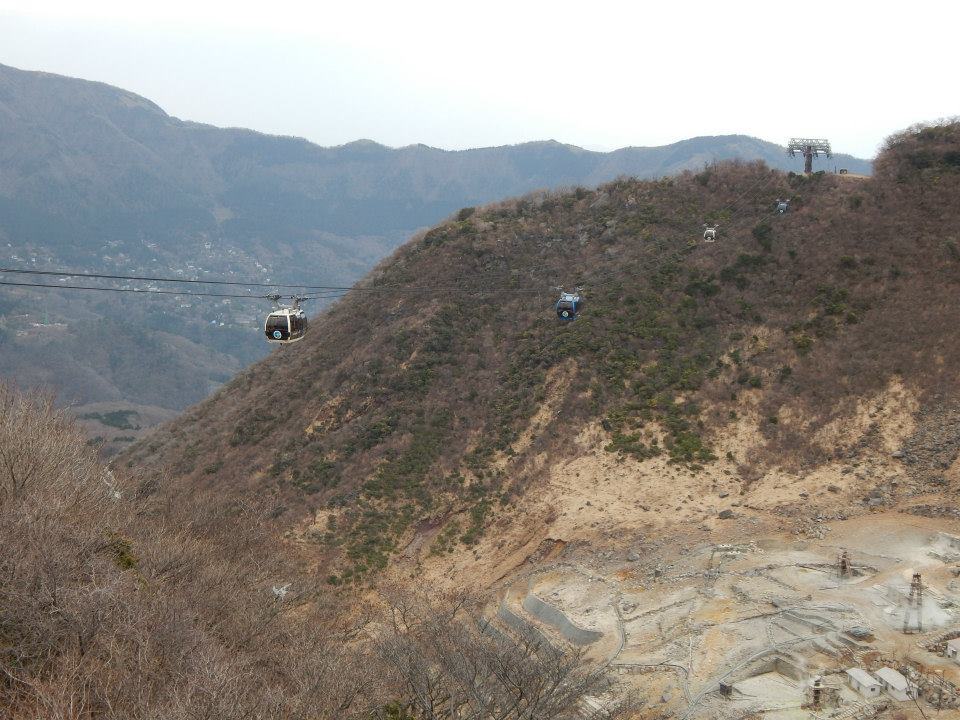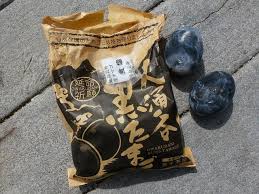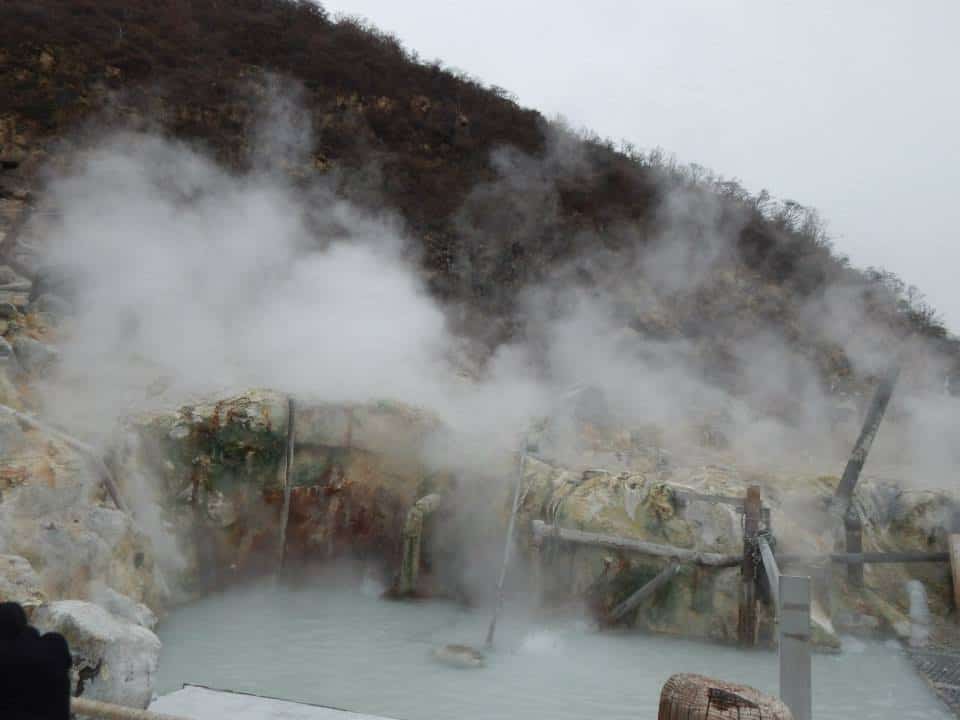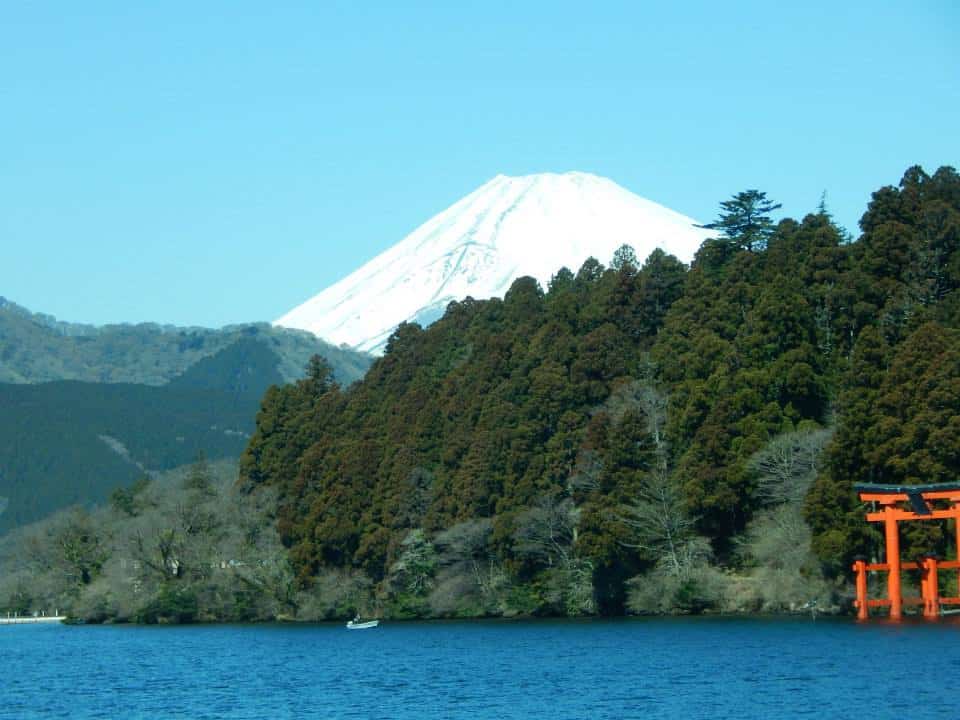
How to Get Around Hakone
When I first started researching the option of adding Hakone onto my trip to Japan, I was confused instantly. In addition to Hakone, there are numerous small mountain towns in the area, all accessible by slightly weird and different modes of transport- gondola, funicular, something called a ‘Romance Car’, and a pirate ship (seriously). Making of sense of how to get around, where to stay, etc., as someone dependent on the country’s public transport, was headache inducing on several levels. This was compounded by the extra stress of visiting as a solo traveler and not speaking Japanese. Tokyo to Hakone by train takes about two hours each way.
I’m writing this guide to hopefully ease the confusion that I felt, and to help others plan their stay. The trick is this- the whole area is basically a circuit, connected by different types of transportation you can’t really ‘get lost’ or ‘get it wrong’. You can buy one ticket that covers everything, the Hakone Free Pass.
It’s easy to get to Hakone from Tokyo with the Japan Rail Pass—it’s a useful train pass designed for tourists, best purchased before you arrive in Japan.
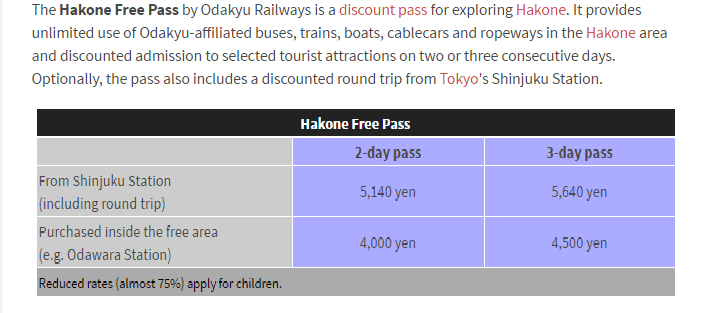
If you want to stay for a few days and see all of the area’s attractions, this is a great option. Otherwise, you can purchase tickets individually, but the Free Pass can also include return fare from Tokyo, making it a pretty good deal. By pre-paying, it also takes the guesswork out of budgeting for this part of the trip.
If you follow the circuit, finding your way around is fairly straightforward. I’d say to allocate two days in Hakone (or one really long day) to do the circuit. If you have time, consider a third day to do some hiking, or relax in one of the area’s onsens.
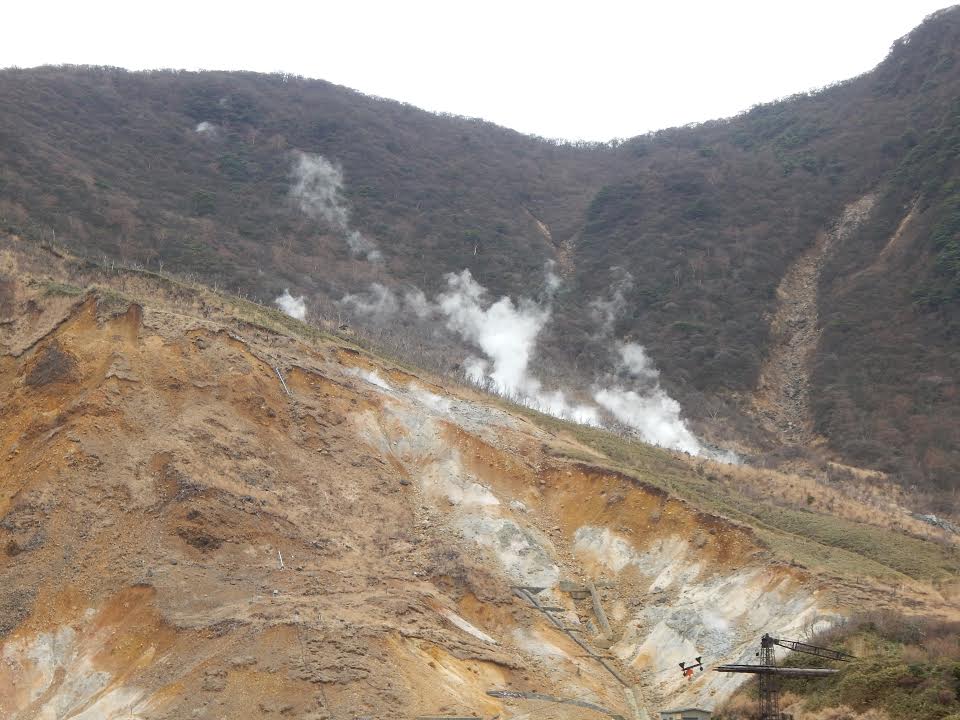
The Free Pass can be purchased from Shinjuku Station in Tokyo, and will cover your journey from Tokyo to Hakone (via Odawara) as well as most Hakone attractions. There is also an option to take the ‘Romance Car’ from Odawara Station (where all passengers must switch to connect to Hakone). I didn’t take this option, because I was travelling alone and there’s nothing romantic about that. Ha. Actually, it’s apparently a nicer, well-appointed train, designed for sightseeing, so probably a good option, even for solo travelers. There’s a slight surcharge for this.
Once you get to Hakone station, you’ll be in the main hub of town. For the sake of convenience, you may want to look at booking accommodation here, or within a short walk from here. I stayed in Tonosawa, which was about a ten minute walk from town, perfect.
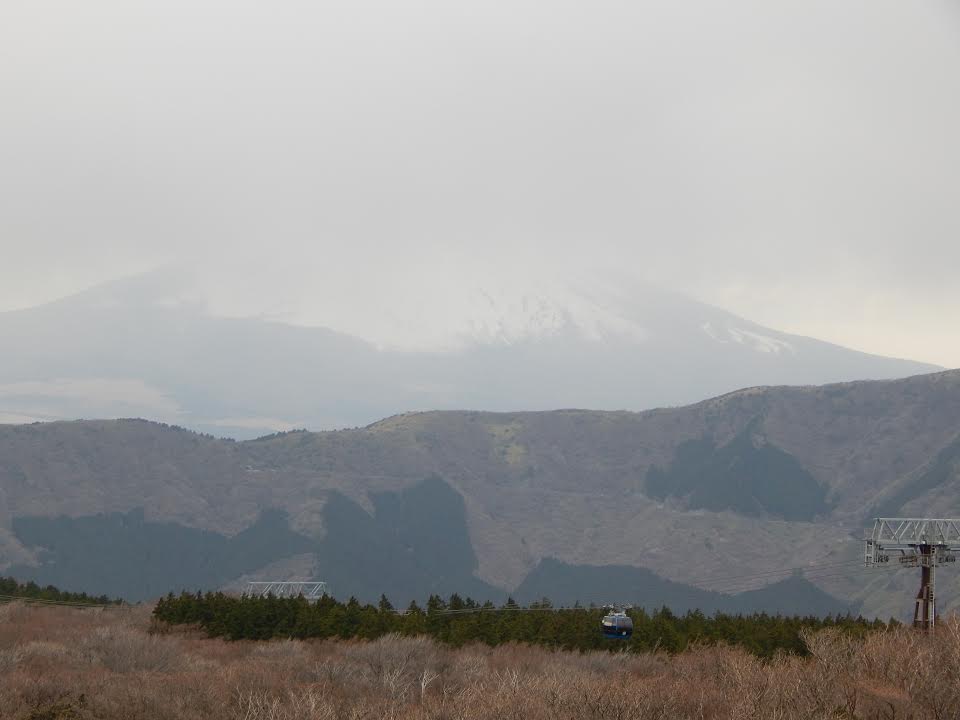
Now, to the sightseeing circuit. There’s a lot of weird and wonderful stuff to see in the area, so giving yourself two full days allows you to make the most of it.
(In addition to what’s mentioned here, the Pass includes unlimited bus transport around the area. I’ve only included below the places I visited, but, as always, there is a lot more to explore.)
Starting from Hakone (technically the circuit can be started anywhere, but as Hakone is the most common starting point, there we will go). There are also a few information centers near the station, and are great places to get help from an English speaker about what to see or where to go.
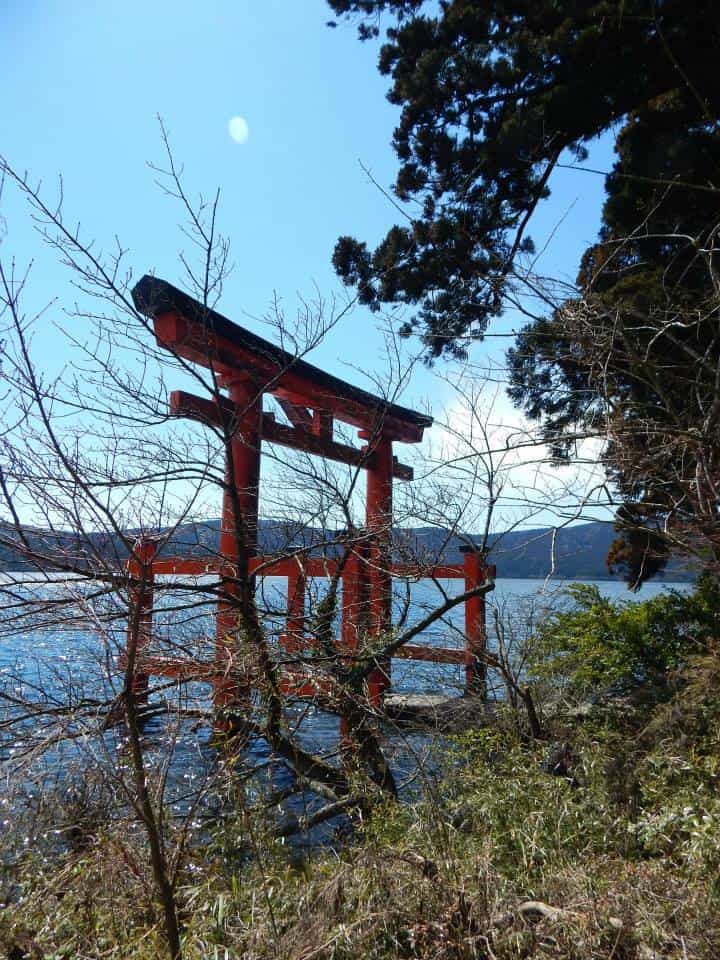
Hakone Tozan Railway
This train is Japan’s only mountain railway line, and starts passengers on the journey up into higher elevation. It also contains a few switchbacks, and can be driven in either direction. If you plan on visiting in peak season, as I did, the train is rather small, and was completely filled with teenagers with selfie sticks and eager tourists.
The crowds took away a bit of the excitement on this leg of the journey, as well as making it hard to see the views, so this probably wasn’t the highlight for me. On a less busy day though, this would be really fun.
After the railway got the top, crowds tended to thin out a bit (though I can’t say where they went), and the top of the Tozan Railway leads to a pleasant area with a few onsens, restaurants, and some accommodation. Have a walk around and explore the area, then make your way over to the Cable Car to continue.
Hakone Tozan Cable Car
The cable car continues up the mountain at a steep incline, and also leads to a range of other mountain towns. Again, another unique way to travel. Check out the views of the mountains and relax on the ride up.
Below: The Ropeway sailing over the mountains.
Hakone Ropeway (Gondola)
The Ropeway was definitely one of the best parts of the circuit. The gondola flies high above the mountains, for stunning views of Mount Fuji, and the landscape. You fly over the sulfur smoke bubbling out from the land’s volcanic cracks below. This creates an eerie, Armageddon feel to the experience, and the sulphuric, rotten-egg sort of smell is omnipresent, adding to the otherworldly feeling. While I was there in early spring, I’m sure it would be just as impressive at any time of the year.
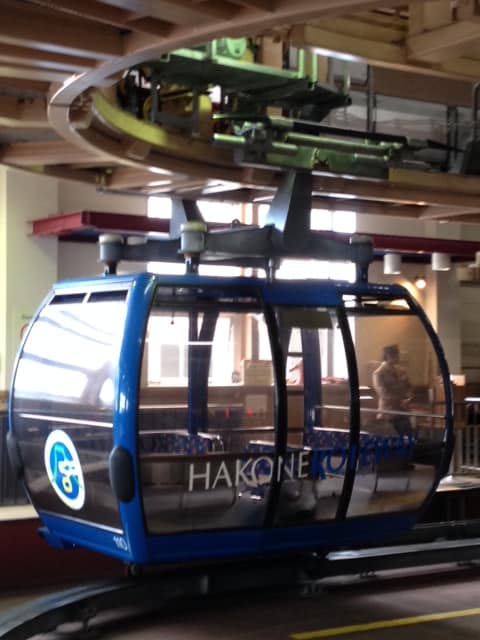
Make sure to hop off at Owakudani Station. (Note- this region is a volcanic valley, and can be closed for public safety, dependant on conditions). A uniquely Japanese oddity (or delicacy?), this region produces black hard-boiled eggs. They are boiled from the water heated from the volcanic activity below. Eating an egg is said to bring good health and add seven years to your life. To hedge your odds, eggs are only sold in a pack of six (so if you’re travelling alone, you might live forever…)
They taste the same as any other egg, but that’s not the point. Learn about the area’s sulphur mining history, and look over the valley for sightings of Mount Fuji, if it’s a clear day. Next, head back down the mountain and make your way to Lake Ashi.
Below: The sulfuric countryside of Owakudani, complete with black eggs.
Lake Ashi Sightseeing Boat
This is a quirky and very Japanese sort of thing. Sail around Lake Ashi on a pirate boat. Why it needs to look like Blackbeard just landed in Japan, I was never able to figure out. (If anyone know this, please tell me). It adds a bit of fun to the trip regardless, and the sightseeing cruise sails around for about an hour. This provides picture-postcard views of the Lake and Mount Fuji. The boat also calls in at several ports along the lake, so you’re able to get off and on at different points.
The air can be very cold on the water, so definitely layer up in cooler months of the year. Paddle boats, in the shape of swans, were also available for hire on the lake.
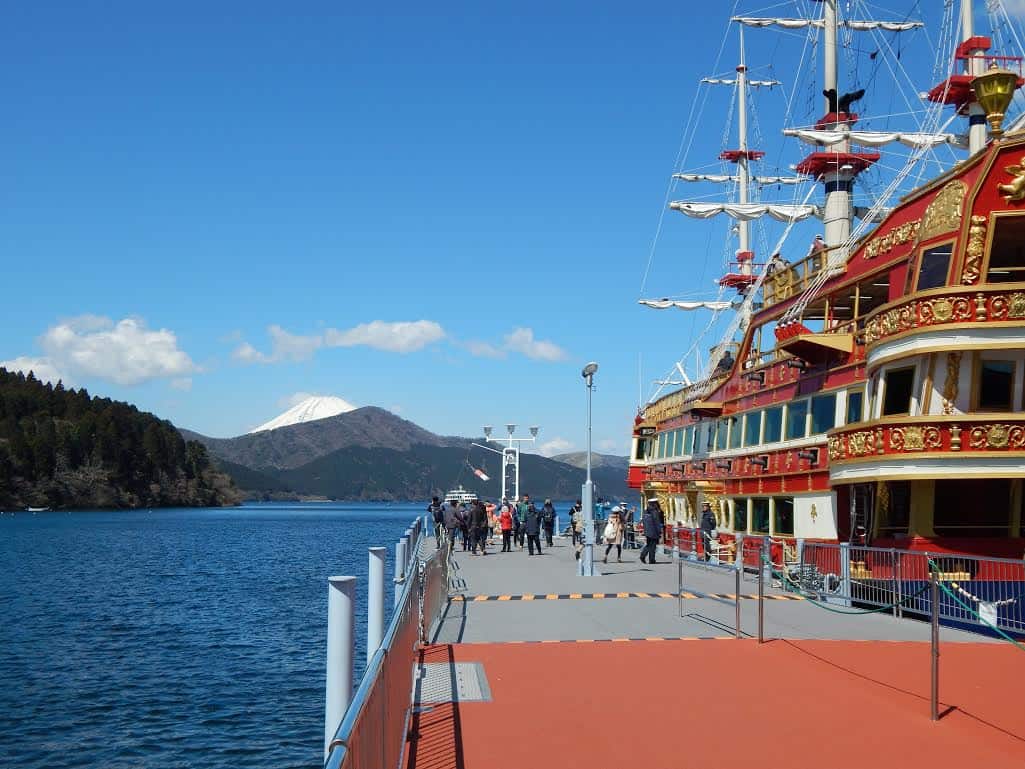
After the cruise, you can catch a bus back to Hakone, included in the Free Pass ticket. Or, take some time to explore and hike around the area. Mount Fuji itself is only open for climbing in the summer, from July to September. However, the mountain is so serene and beautiful, don’t let the closure put you off, as it is spectacular even from a distance.
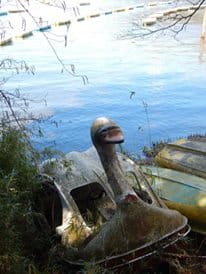
Also, look for the famous torii gate along the lake’s shores- this is an entrance to the Hakone Shrine.
I found the whole area completely delightful beautiful scenery, amazing food, and very quintessentially Japanese. Consider spending a night in one of the area’s ryokans, or traditional Japanese guesthouses, to really soak up the local feel. Although they can be expensive, they are worth the splurge, if only for a night. The Hakone onsens are amazing and relaxing, and can be found in many Hakone ryokans.
It’s a great weekend away from Tokyo. Also a good place to experience a feel of Japan other than its cities, if you have limited time.
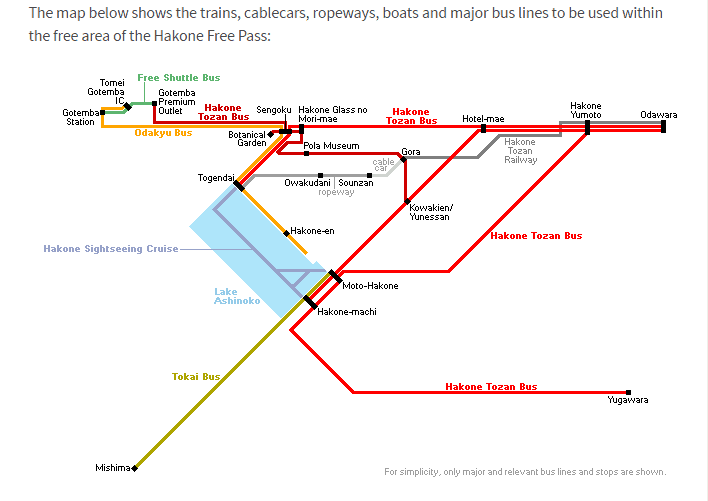
More information on Hakone:
Japan National Tourism Organisation
Would love to hear what others think about the Hakone region, feel free to comment below!
(All attractions and experiences were paid for completely by myself, and all reviews are unbiased and impartial.)

